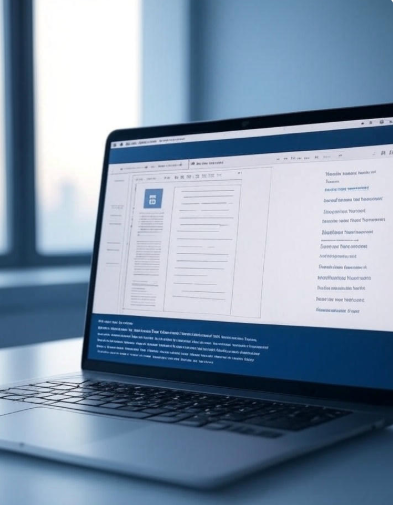In the ever-shifting landscape of cybersecurity, a disturbing trend has emerged: tools once confined to the shadowy corners of cybercriminal forums are now wielded as instruments of geopolitical power. A recent Bloomberg newsletter, dated April 2, 2025, highlights this transformation, detailing how a niche hacking tool has transcended its origins to become a weapon in the hands of state actors and their proxies. This development marks a pivotal moment in the convergence of technology, crime, and international relations, raising urgent questions about the future of global security.
The Roots of the Threat
Cybercrime has long been a domain of opportunists—individuals or small groups exploiting vulnerabilities for financial gain. These actors relied on specialized tools, often developed by skilled coders within their communities, to target businesses, individuals, and institutions. One such tool, as noted in the Bloomberg report, began as a niche piece of software designed to infiltrate specific systems. Its original purpose was likely narrow: perhaps to steal data, extort victims, or disrupt operations for profit. But what made this tool stand out was its sophistication—capable of evading detection and exploiting weaknesses with precision.
Historically, such tools were traded in underground marketplaces, accessible only to those with the know-how and connections. They were the digital equivalent of lockpicks or skeleton keys—effective in skilled hands but limited in scope. However, as cybersecurity defenses have evolved, so too have the ambitions of those wielding these tools. The line between cybercrime and geopolitics began to blur when state-sponsored actors recognized the potential of these underground innovations.
A Geopolitical Pivot
The Bloomberg newsletter underscores a critical shift: this once-obscure hacking tool has been co-opted by nation-states, transforming it into a geopolitical weapon. This isn’t an isolated incident but part of a broader pattern. Governments, particularly those with strained diplomatic relations, have increasingly turned to cyber operations as a means of exerting influence without direct military confrontation. Unlike traditional warfare, cyberweapons offer plausible deniability, lower costs, and the ability to strike silently across borders.
What makes this particular tool noteworthy is its adaptability. Originally designed for criminal purposes, it has been repurposed to target critical infrastructure—think power grids, financial systems, or communication networks. Such attacks can destabilize economies, sow chaos, or weaken adversaries without firing a single shot. The newsletter suggests that this evolution reflects a growing sophistication among state actors, who are not only adopting these tools but enhancing them with resources far beyond the reach of lone hackers.
This shift also highlights a symbiotic relationship between cybercriminals and governments. In some cases, states may directly recruit or sponsor hackers, offering protection in exchange for their skills. In others, they simply acquire tools from the dark web, reverse-engineering them for their own ends. The result is a dangerous feedback loop: cybercriminals innovate, states weaponize, and the cycle accelerates.
Real-World Implications
The implications of this trend are staggering. Consider the recent wave of cyberattacks reported in early 2025—hacks targeting everything from corporate servers to government databases. While not explicitly linked to the tool in question, these incidents illustrate the growing audacity of cyber operations. For instance, Oracle’s multiple breaches in the past month, as reported by Bloomberg and Reuters, involved stolen credentials and patient data, hinting at the kind of precision and scale this tool might enable. Similarly, the coordinated hacking of Australian pension funds, compromising thousands of accounts, shows how such capabilities can wreak havoc on a national level.
Geopolitically, the stakes are even higher. A tool capable of disrupting critical infrastructure could be used to punish dissenting nations, manipulate elections, or retaliate against sanctions. Imagine a scenario where a country’s power grid fails during a diplomatic standoff—not an act of war in the traditional sense, but a devastating blow nonetheless. The Bloomberg report suggests this is no longer hypothetical; it’s a reality we’re barreling toward.
The Challenge of Defense
Defending against this new breed of threat is no small feat. Traditional cybersecurity measures—firewalls, antivirus software, employee training—are often designed to combat conventional cyberattacks, not state-backed operations leveraging cutting-edge tools. The adaptability of this hacking software, as noted in the newsletter, makes it particularly elusive. It can evolve to exploit new vulnerabilities faster than defenders can patch them.
Governments and corporations alike are scrambling to respond. The UK, for example, recently announced legislation to bolster the cyber defenses of companies supporting critical infrastructure, a move prompted by attacks from Russia, China, Iran, and North Korea. Meanwhile, the U.S. Pentagon is investigating its own vulnerabilities after officials were caught discussing sensitive military plans on an unsecure messaging app. These examples underscore a harsh truth: even the most powerful entities are struggling to keep pace.
What Lies Ahead
The rise of this niche hacking tool as a geopolitical weapon signals a new era in global conflict—one where the battlefield is digital, and the combatants are as likely to be coders as soldiers. It’s a wake-up call for policymakers, who must grapple with how to regulate an arms race that defies traditional boundaries. International agreements on cyberweapons are notoriously difficult to enforce, given the anonymity and attribution challenges inherent in cyberspace.
For the private sector, the message is equally clear: cybersecurity is no longer just an IT issue; it’s a matter of survival. Companies must invest in advanced threat detection, collaborate with governments, and prepare for attacks that blend criminal ingenuity with state-level resources. The Bloomberg newsletter serves as a stark reminder that the tools of tomorrow’s wars are being forged today—often in places we least expect.
A Call to Action
As we stand on the brink of this new frontier, complacency is not an option. The transformation of a niche hacking tool into a geopolitical weapon is a testament to human ingenuity—and a warning of its darker potential. It’s a story of innovation twisted by ambition, of technology outpacing our ability to control it. Whether we can rise to this challenge remains to be seen, but one thing is certain: the stakes have never been higher.
In the end, the Bloomberg report isn’t just a snapshot of a single tool’s journey—it’s a glimpse into a future where the lines between crime, technology, and power are irrevocably blurred. The question now is how we respond before the next weapon emerges from the shadows.



